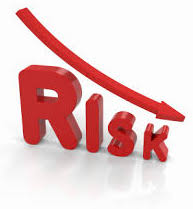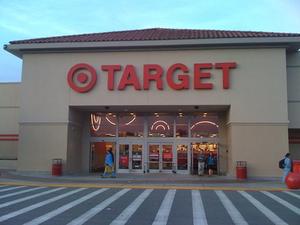“Should I go deep on this item?”
“How deep should I go on this item?”
“What does it mean to ‘go deep’ on an item?”
These are all questions we get on a regular basis, whether in blog comments, in the Full-Time FBA Facebook group, or on our YouTube channel. One of the universal fears of being an online seller is going too deep on an item and having it bust.
If you were to summarize the risk involved with being an Amazon FBA seller in a nutshell, it would come down to this: knowing how much money to invest in which items.
I have some good news and bad news about the fear we’re covering today in our blog series. Which news do you want first? Never mind, let’s get the bad news out of the way first…
We can’t make a perfect decision every time. We all make mistakes. And sometimes we learn best through trial and error. Even when it comes to deciding how deep to go on an item.
 The good news is really great news, though. We have the ability to refine your decision-making process and reduce the risk of going deeper than we should. Notice I said reduce, not eliminate. There will always be variables out of our control and ways that we can’t predict future sales. But if we focus on the factors we do know and we can control, then we can increase the likelihood of making profitable decisions concerning how much inventory to buy.
The good news is really great news, though. We have the ability to refine your decision-making process and reduce the risk of going deeper than we should. Notice I said reduce, not eliminate. There will always be variables out of our control and ways that we can’t predict future sales. But if we focus on the factors we do know and we can control, then we can increase the likelihood of making profitable decisions concerning how much inventory to buy.
As we’re handling our fear today of going deep on inventory items, here’s a set of questions to ask ourselves in the buying process:
#1 How much capital do I have to invest?
 This first question may seem too basic, but you would be surprised how many people don’t know their numbers in their business. It’s impossible, however, to make solid buying decisions if you aren’t aware of 1) how much money you have available to invest and 2) how much you have tied up already in inventory. Once you know those numbers, you can look at the buy cost of the item you’re considering and come up with a good idea of how much money you’re willing to tie up in this new inventory.
This first question may seem too basic, but you would be surprised how many people don’t know their numbers in their business. It’s impossible, however, to make solid buying decisions if you aren’t aware of 1) how much money you have available to invest and 2) how much you have tied up already in inventory. Once you know those numbers, you can look at the buy cost of the item you’re considering and come up with a good idea of how much money you’re willing to tie up in this new inventory.
Also, look at the percentage of your inventory that will be tied up in this investment. Even if something looks to be a sure deal, it’s super risky to have too great a percentage of your total inventory tied up in one product.
#2 What is the sales rank of the item on Amazon? Better questions: What is the sales rank history? What is the current sales velocity?
 Yes, look at the rank of the item and where it falls in the top-selling items in its Amazon category, absolutely. But you have to do your due diligence to follow through and see if today’s sales rank is a fluke (i.e. a spike from a recent sale in an otherwise slow-selling item) or if it’s the typical rank. Check out the item on keepa to see how it usually fares compared to today’s rank.
Yes, look at the rank of the item and where it falls in the top-selling items in its Amazon category, absolutely. But you have to do your due diligence to follow through and see if today’s sales rank is a fluke (i.e. a spike from a recent sale in an otherwise slow-selling item) or if it’s the typical rank. Check out the item on keepa to see how it usually fares compared to today’s rank.
Another important factor to consider is the time of year that you’ll be selling this item. Sales velocity during Q4 can make a 100,000-ranked toy a different bet than in, say, July. If you buy deep in this item now, will you be able to sell it quickly? Or will you need to be patient to sell out over a longer period of time?
#3 How many sellers are on this item?
 You need to know and consider your competition. Looking at the number of sellers and the sales velocity, how likely is it that you will lose profit margin on this item if other sellers drop their prices and you try to stay competitive? Along with the number of sellers, you should also consider how much your competition has in stock (see this blog post to learn how to see your competition’s amount of stock).
You need to know and consider your competition. Looking at the number of sellers and the sales velocity, how likely is it that you will lose profit margin on this item if other sellers drop their prices and you try to stay competitive? Along with the number of sellers, you should also consider how much your competition has in stock (see this blog post to learn how to see your competition’s amount of stock).
For example, a while back we had an item that we were selling and replenishing at a regular pace for several weeks, and suddenly we had an opportunity to buy it in a greater quantity at a lower price. At first this seemed like a great opportunity for us, but after a few calculations based on the number of items we’d been selling per day and the amount of competitors’ stock at the same price, we decided against making a larger purchase. The trend we saw in the numbers indicated that the price was going down faster than our sales would be able to keep up. We sold out of the item a couple of weeks later, and when I checked on this item today it was priced 30% lower than when we were selling it. We made the right decision.
#4 What is the buy cost of the item and the expected sale price?
Will it cost $5 to buy one of this item? $20? $50? $100? Let’s say the ROI is equal, 100% for all these items. If I buy 20 of an item at $5, it takes the same amount of financial investment as buying 1 of a $100 item. The higher my buy cost, the fewer number of items I’ll be able to buy — and the more risk involved in selling that one item if the selling price falls out from underneath me. Now, there is less time and fewer resources invested in prepping and shipping 1 item than in 20, so that’s a consideration also.
I’m not trying to say that you should only buy $5 items or only buy $100 items. I’m saying you should consider all these factors, and that “going deep” can mean only 1 item if it’s a $100 item.
#5 What is my source for this item?
 Is this a retail or online source at full price that anybody and everybody can find? Will other people be able to stack coupons, cash back, or other discounts to get a better ROI than me, meaning it’s possible that I might have to sacrifice profit margin to stay competitively priced?
Is this a retail or online source at full price that anybody and everybody can find? Will other people be able to stack coupons, cash back, or other discounts to get a better ROI than me, meaning it’s possible that I might have to sacrifice profit margin to stay competitively priced?
Or is this a clearance or discontinued item at a unique location that other people can’t find? If so, it’s less likely that my competition will increase, and I have a better shot at selling at the price I want. Also, I can consider whether this is an item I can buy a few of (whether that’s 1, 2, 5, or 10 depends on your answers to all of the above questions and more) to test out and come back for more if needed. Here you’ll need to consider the distance you’ll have to travel to pick up the items on a return trip, or whether it will sell out at that location before you have time to test.
When it comes down to it, there’s no tried-and-true formula to guarantee that you’ll always know exactly how deep to go on any one particular item of inventory. We all have stories about “the one that got away” (the item we wish we’d gone deeper on, but now we can’t find it again), as well as stories of items that we wouldn’t touch again with a 10-foot pole. Hindsight is 20/20. But we can make smart sourcing decisions if we ask ourselves the right questions.
Are we leaving out any factors that you consider before going deep on an item? Let us know in the comments. We’d love to hear your input!

All great points, and I agree with your #1. Bankroll is key. I went too deep on an Item this spring and spent half my bankroll on it. It ended up being a slow seller and competition increased, so I still have not recouped my investment. Lesson learned.
What I did learn is to BE the competition on some products though. I have an item that costs $62 retail and sells for between $88 and $110. I noticed the competition seemed to always only have a couple items in stock, and they were probably a bit skittish about the cost of the item and going too deep. I theorized that if I could stack discounts (credit card cash back, store sale, fatwallet, gift cards) and buy a huge quantity when the price was low, I could undercut their price and force them out of the market on the item. And it is working! by buying in large quantity every month or so during sale times, and buying gift cards during off times when the % is great, I am able to weather the highs and lows and dominate the listing, while most of the competition will sell out during the high selling period and cannot restock. It was a risk that has paid off for me as I am able to source this item for $42 and have never sold it for less than $88. I sell 2.5 a day on average and it is by far the best item I have ever had, especially considering the competition is fierce. Being cutthroat has paid off on this one.